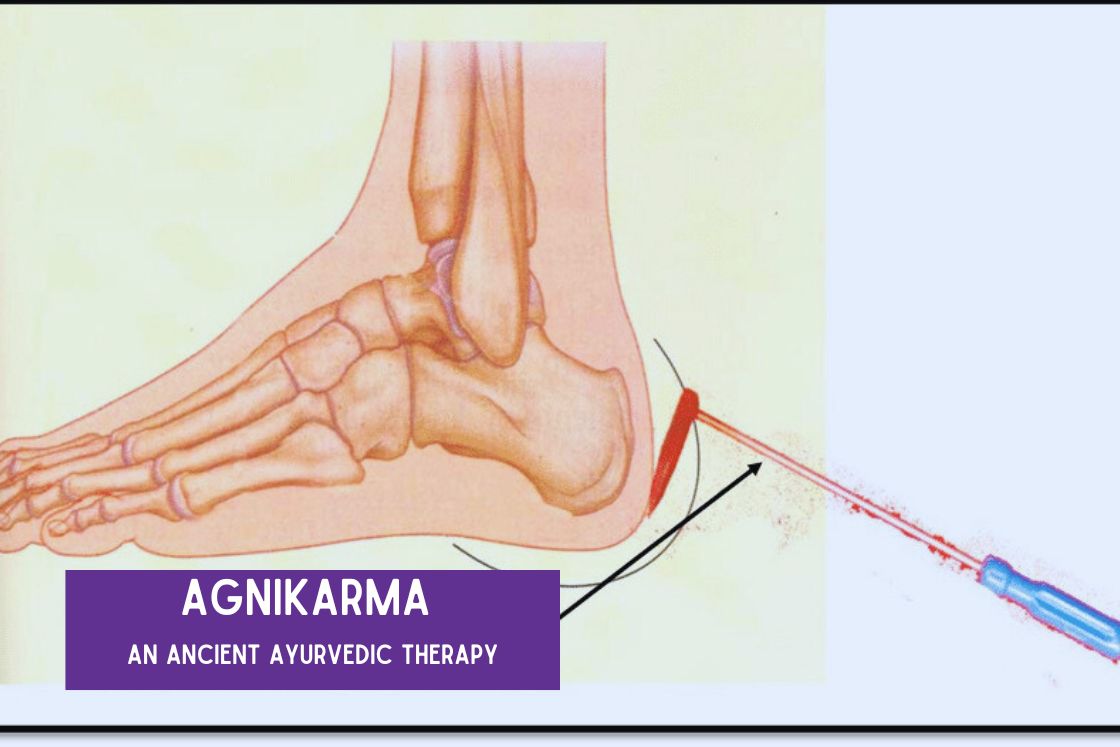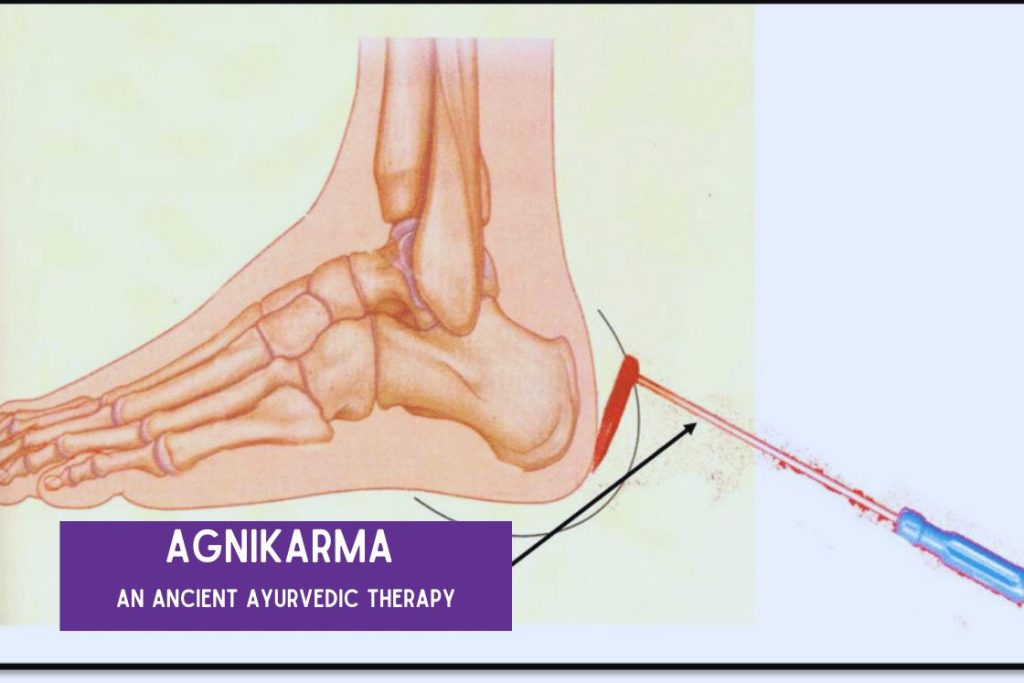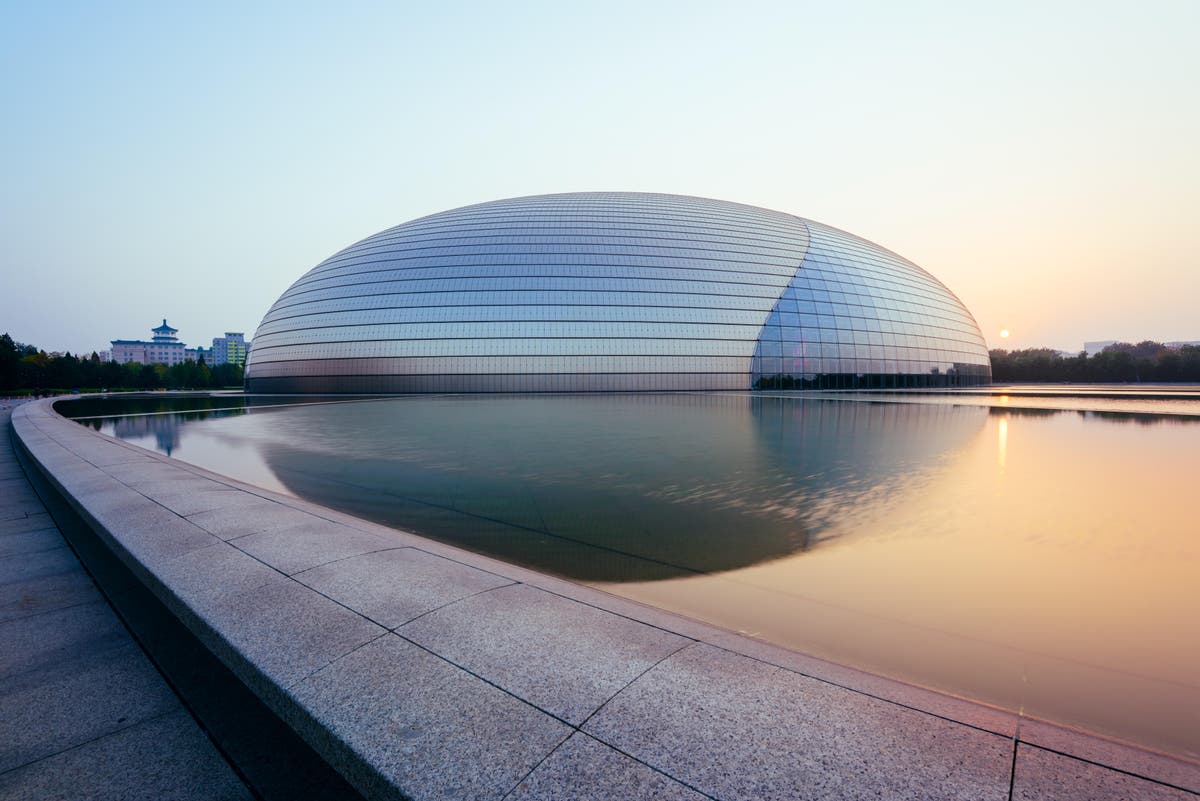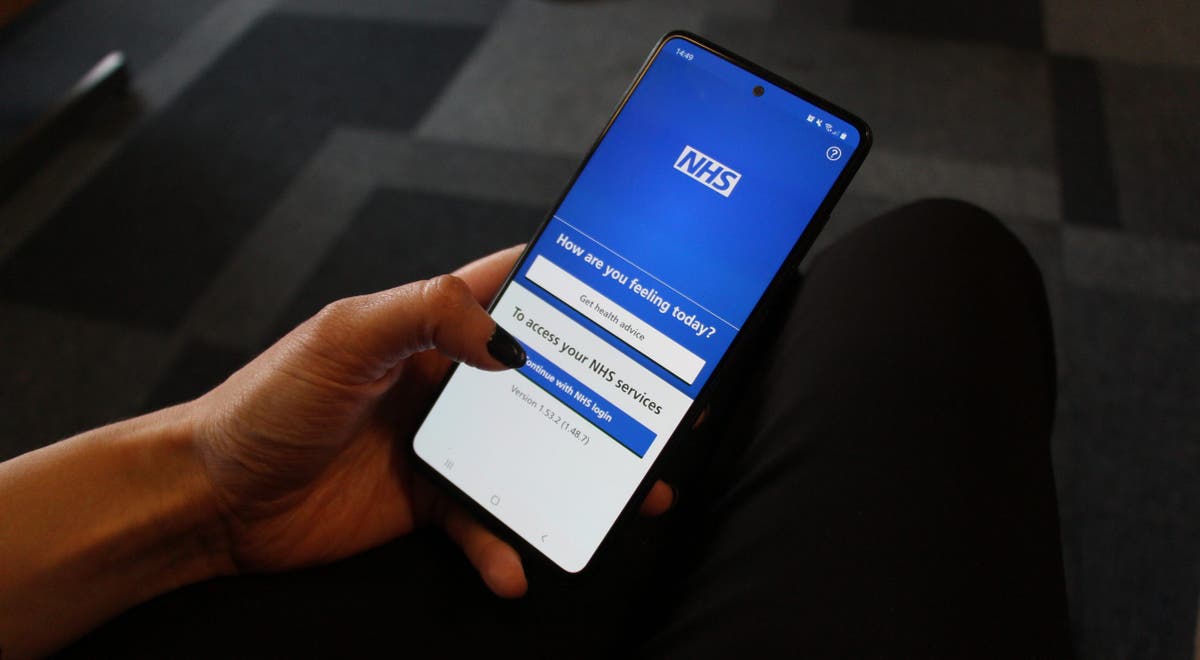Agnikarma in Ayurveda: An Ancient Fire Therapy for Holistic Healing
Imagine feeling relief from chronic pain without the use of chemical medication—sounds liberating, doesn’t it? This is where Agnikarma in Ayurveda comes into play. Agnikarma is an ancient technique within the holistic wellness system of Ayurveda that aims to...

 Image Source: Researchgate.net
Image Source: Researchgate.netImagine feeling relief from chronic pain without the use of chemical medication—sounds liberating, doesn’t it? This is where Agnikarma in Ayurveda comes into play. Agnikarma is an ancient technique within the holistic wellness system of Ayurveda that aims to treat various musculoskeletal conditions, Such as joint pain or lower back pain, through controlled thermal therapy. Using a specially-prepared, heated metal rod, the treatment targets specific pressure points to stimulate healing.
What is Agnikarma in Ayurveda?
Agnikarma, in its most basic understanding, is the therapeutic application of heat. Heat energy can have the ability to fundamentally change and stimulate any area of our body on a cellular level. In this way, agnikarma, or the therapeutic application of heat, can control inflammation, infection, blood circulation, and even promote healing. However, the comprehensive scope of the Agnikarma process goes beyond the mere application of heat to our bodies.
Agnikarma therapies are often known for using the transformative power of heat to activate a fast-acting nature in herbal topical ointments and even inhalation-based smoke therapies. Agnikarma in Ayurveda relies on the innate ability of heat to both directly affect our body mechanisms and enhance the effectiveness of various Ayurvedic medicines
The Philosophy of the Transformative Fire (Agni) in Ayurveda
The philosophy of Agnikarma is intrinsically tied to the Ayurvedic understanding of the five elements – earth, water, fire, air, and space. Fire, or “Agni,” holds a special place in Ayurvedic medicine. Ancient sages believed that Agni was the agent of transformation, turning food into energy, experiences into memories, and challenges into spiritual growth. In therapeutic terms, Agnikarma became the representation of this transformative power.
Agnikarma as a treatment channels the essence of this transformative fire. Through the targeted application of heat to specific areas or points of the body, impurities, ailments and imbalances are said to be “burned away”. This is not just a physical act, but a deeply symbolic one. It represents the idea of burning away the old, unnecessary and harmful to make room for renewal and balance.
The philosophy of Agnikarma is rooted in the belief that our body, mind, and spirit are interconnected. An imbalance or ailment isn’t just a physical manifestation; it could be the result of emotional, mental, or spiritual disturbances. The treatment, therefore, is not just about alleviating physical symptoms but restoring harmony across all layers of existence.
Historical Background and Origins
Agnikarma, the term itself is derived from two Sanskrit words: Agni, meaning fire, and Karma, meaning action. The roots of this practice go back thousands of years and are documented in classical Ayurvedic texts. All major Ayurvedic texts such as Charaka Samhita, Sushruta Samhita, Ashtanga Hridayam and Ashtanga Sangraha contain detailed mention of agnikarma. And it is the detailed explanations of Agnikarma application in this literature that form the basic understanding of the Agnikarma procedure.
The advent of modern medicine and surgical techniques led to a decline in the popularity of traditional methods such as Agnikarma. However, in recent decades, there has been a resurgence of interest, especially among those seeking holistic and less invasive treatment options. Today, Agnikarma, while not the first choice, is a proven and frequently used method, especially in traditional Ayurvedic treatment centers.
How Does Ayurvedic Agnikarma Work?
In Agnikarma treatment, a metal rod is heated and applied to specific points on the body called pressure or energy points. In this way, the flow of energy is to be balanced and healing processes in the body are to be stimulated.
Agnikarma is about targeting the right points and applying the heat in a controlled manner. The heat acts on the soft tissues, increases blood flow to the affected area and stimulates the natural healing mechanisms. An Agnikarma treatment usually lasts only a few minutes, but its effects can be long-lasting
Role of Heat and Thermal StimulationThe controlled application of heat to specific parts of the body helps relieve pain, inflammation and other discomfort. Various instruments, usually metal rods or “shalakas,” are used to generate and direct this heat. By heating these instruments and placing them on the diseased areas, Agnikarma in Ayurveda uses the power of thermal stimulation to promote the body’s natural healing process.
Activation of Specific Points on the BodyA pivotal aspect of Agnikarma in Ayurveda is its targeted approach. Not every part of the body receives the heat treatment. The therapy is based on the identification and stimulation of specific vital points or “marmas.” When these points are subjected to heat via the instruments, it leads to a therapeutic response. The precise location and method of application are determined by the practitioner, ensuring safety and efficacy.
Activation of Ayurvedic IngredientsWhile the instruments are the primary agents of thermal treatment, Ayurveda’s holistic approach brings in a plethora of natural ingredients that play a supportive role. Before or after the procedure, the area might be treated with Ayurvedic pastes, oils, or herbs, enhancing the healing outcome. The heat from the procedure can activate these ingredients, allowing them to penetrate deeper and work synergistically with the thermal treatment. In essence, Agnikarma in Ayurveda becomes a blend of pure thermal therapy and the profound benefits of Ayurvedic ingredients.
Like we have been discussing from the beginning, Agnikarma is not just about applying heat to the body. Various sources across Ayurvedic literature have pointed out multiple ways of applying this transformative power of Agni. The based on the fundamental process of the procedure one can categorize Agnikarma into the following types:
Shalaka MethodThe Shalaka method involves using a metal rod, also called ‘Shalaka,’ that is heated and then applied to the specific area needing treatment. This is the most traditional form of Agnikarma and is commonly used for conditions like arthritis, sciatica, and other joint pains. In terms of pain management, it is particularly effective for delivering immediate relief.
Pippali MethodInstead of a metal rod, the Pippali method uses a long pepper, heated and applied to the skin. This is generally used for smaller, more specific areas, often in treating skin conditions or localized pain. The Pippali method allows for very targeted treatment and is another tool in Ayurveda’s pain management arsenal.
Kshara MethodIn the Kshara method, a paste made from medicinal herbs is applied to the affected area. The paste is then heated to induce its effects. This method is often used for treating skin conditions like warts or small tumors.
Agni DhoopanAgni Dhoopan involves the use of medicinal smoke instead of direct contact with a heated object. The area needing treatment is exposed to this medicinal smoke, which is believed to have both antiseptic and therapeutic properties. This method is generally used for treating respiratory conditions.
Prati SharniyaThis method is used for larger areas and involves spreading a thin layer of ghee on the affected area before applying heat. It’s a softer approach compared to the Shalaka method and is often used for conditions requiring gentle heat application.
The Effectiveness of Agnikarma in the Treatment of Various Ailments
Agnikarma procedure in its efficacy is versatile. Agnikarma treatment can be used for treating conditions like joint pain, muscle spasms, respiratory tract infections, arthritis, nervous disorders, chronic wounds, and intermittent skin conditions. Agnikarma is typically known for its immediate relief, however, a prolonged and comprehensive Agnikarma therapy can also provide holistic healing.
SciaticaSciatica is characterized by pain radiating from the lower back down the leg due to the compression or irritation of the sciatic nerve. Agnikarma involves the application of a heated instrument on specific points (Marmas) along the path of the sciatic nerve.
The heat from Agnikarma helps in dilating the blood vessels, increasing blood flow to the affected area. This can reduce inflammation and muscle spasms, providing relief from the radiating pain. Additionally, the localized heat can also stimulate nerve endings, providing pain relief.
OsteoarthritisOsteoarthritis involves the degeneration of joint cartilage and underlying bone. Agnikarma, when applied to the affected joints, can stimulate the local metabolism and blood flow.
The increased blood flow can bring more nutrients to the joint, potentially aiding in the repair of damaged tissues. The heat can also reduce joint stiffness by making the synovial fluid in the joint more viscous, improving joint mobility.
ArthritisArthritis, characterized by inflammation of the joints, leads to pain, swelling, and restricted movement. Agnikarma for Arthritis involves heating specific arthritic joints or the surrounding area. This heat therapy reduces inflammation and provides much-needed relief to patients.
FistulaA fistula is an abnormal connection between two body parts and can be quite painful. Agnikarma for Fistula offers an alternative to surgical interventions. By targeting the fistula’s opening with heat, it promotes healing and reduces the chances of recurrence.
Skin WartsSkin warts, often caused by the human papillomavirus (HPV), can be unsightly and sometimes painful. Agnikarma can be used to burn these warts, ensuring they fall off after treatment, leaving the skin clear and healthy. Skin conditions like warts and other chronic or intermittent localized skin conditions are treated in Ayurveda using the combination of Kshara and Pippali Agnikarma procedures.
Respiratory AilmentsAgnikarma, while not as well known, can also be helpful for certain respiratory conditions. By targeting specific points related to respiratory function, it can help clear the airways and improve overall lung health. Agni Dhoopan Agnikarma is a very popular choice when it comes to respiratory ailments.
Migraines and Chronic HeadachesChronic headaches and migraines can be very distressing for many people. Agnikarma’s targeted heat therapy on specific points of the head and neck can provide relief by reducing the frequency and intensity of these headaches. Agnikarma procedures such as Pippali and Kshara are often effective for chronic headaches.
Tennis ElbowTennis elbow is an inflammation of the tendons that join the forearm muscles on the outside of the elbow. Agnikarma, when applied to the lateral epicondyle area, can stimulate blood flow and reduce inflammation.
The localized heat can help in breaking down scar tissue, promoting healing, and reducing pain. It can also relax the muscles and tendons in the area, reducing tension and strain.
Lumbar SpondylosisLumbar spondylosis is a degenerative condition of the lower spine. Agnikarma can be applied to specific points on the lower back to stimulate blood flow and relax the muscles.
The heat can help in reducing pain and stiffness in the lumbar region. It can also promote the healing of any damaged intervertebral discs or ligaments, providing structural support to the spine.
Nervous DisordersNervous disorders can range from neuropathies to nerve compression syndromes. Agnikarma can be applied to specific nerve points or along the course of the affected nerves.
The heat can stimulate nerve function, improving nerve conductivity. It can also reduce pain and inflammation associated with nerve disorders. The localized heat can relax surrounding muscles, potentially relieving any compression on the nerves.
The Benefits of Using Agnikarma Treatment
Like Agnikarma procedure it benefits are also multifaceted. There are the physiological benefits that Agnikarma provides. There are unique advantages of using Agnikarma that make the procedure standout from other Ayurvedic Treatments. And, then there are specific scenarios when Agnikarma proves particularly more effective more other Ayurvedic procedures like Panchakarma.
Pain Relief: The controlled heat targets the pain points, easing muscle tension and alleviating chronic pain conditions. It’s a testament to Agnikarma’s efficacy that it is often lauded as “Agnikarma for Pain Management.” Inflammation Reduction: By enhancing blood circulation and initiating a therapeutic response, Agnikarma helps reduce inflammation in the affected areas. Infection Elimination: The localized heat application can create an unfavourable environment for pathogens, aiding in the elimination of infections. Tissue Regeneration: Agnikarma promotes tissue healing and regeneration, thereby restoring the normal function of the affected area. Low Risk of Side Effects: Because Agnikarma primarily uses controlled heat therapy, the risk of unwanted side effects is lower than some pharmaceutical interventions, which can have unintended consequences. Minimal Downtime: After Agnikarma treatment, patients can usually return to their daily activities relatively quickly, minimizing interruptions in their lives. Holistic Approach: Agnikarma is guided by the holistic principles of Ayurveda and takes into account the whole person— – body, mind and spirit — when treating pain and discomfort. Complementary to Other Therapies: Agnikarma can be used in conjunction with other Ayurvedic treatments and therapies to create a comprehensive approach to health and well-being.Comparison with Other Ayurvedic Treatments:
Ayurveda, a centuries-old medical system, offers a plethora of treatments catering to diverse health needs. Among them, Agnikarma in Ayurveda stands out for its unique approach to healing. But how does it compare with other renowned therapies like Panchakarma or herbal remedies? Let’s examine.
Contrasting Agnikarma with Other Ayurvedic Treatments
Panchakarma: Panchakarma and Agnikarma are two different Ayurvedic therapies with different purposes and approaches. Panchakarma is a comprehensive detoxification and rejuvenation protocol consisting of five therapies to purify the entire body and restore doshic balance. It has a broader scope, and targets overall well-beign. On the other hand, Agnikarma is a more focused treatment involving localized heat application to directly target specific ailments or areas, making it particularly effective for addressing specific conditions with precision. Herbal Remedies: Herbal remedies, a cornerstone of Ayurvedic treatments, involve the use of natural herbal-based ingredients to treat a myriad of conditions. These remedies work by addressing the root cause of an ailment over a stipulated period. In contrast, Agnikarma offers immediate relief in many cases, especially when used as Agnikarma for Pain Management.Situations where Agnikarma may be Preferred
Acute pain: When immediate alleviation is sought, especially in cases of acute pain, Agnikarma emerges as a first-choice treatment. Its direct approach often leads to rapid relief from ailments. Localized Treatment: For issues that are localized, like warts, corns, or specific muscular pain, the precision of Agnikarma is unmatched. Patients with multiple health complications: Patients who already suffer from many other health complications may find it difficult to take on more rigorous ayurvedic procedures, follow strict diets, or even combat the side effects of strong modern medications. In such cases, non-invasive, yet targeted, Agnikarma can be very beneficial. Chronic Ailments: In chronic conditions, where other treatments might not have yielded the desired results, Agnikarma’s transformative nature and unique methodology can often provide respite, making it a valuable addition to comprehensive treatment plans.Agnikarma Treatment Procedure
Pre-Procedure Preparations:-
Before you begin Agnikarma Treatment, you’ll have a consultation with a qualified Ayurvedic practitioner. During this meeting, your medical history will be reviewed, and diagnostic tests may be conducted to ensure that Agnikarma is the right treatment for you.
Schedule a Consultation: Make an appointment with an experienced Ayurvedic practitioner. Medical Records: Bring any relevant medical records and test results. Questions: Prepare a list of questions you might have about the Agnikarma treatment. Physical PreparationsAgnikarma is usually an outpatient procedure, meaning you’ll go home the same day. However, some physical preparation is still necessary.
Key Points:
Hydration: Drink plenty of water in the days leading up to the procedure. Diet: Follow any dietary restrictions or guidelines provided by your healthcare provider. Clean the Area: The area to be treated should be clean. Sometimes, a specific cleansing process will be prescribed before the Agnikarma procedure. Mental PreparationsThough Ayurveda Agnikarma is minimally invasive, some mental preparation can help you feel more at ease.
Key Points:
Research: Familiarize yourself with what the Agnikarma procedure entails. Talk to Others: If possible, speak with people who have undergone the treatment to get firsthand insights. Relaxation Techniques: Simple breathing exercises can help you stay calm leading up to the treatment. Day-of PreparationsOn the day of the Agnikarma treatment, you should:
Arrive Early: This allows enough time for any last-minute preparations or discussions with your practitioner. Wear Comfortable Clothing: Loose, comfortable clothing is advisable as you might need to expose the area to be treated. Personal Items: Bring any personal items that may be necessary post-treatment, like a change of clothes or specific ointments that have been prescribed for aftercare.Post-Procedure Care:-
It’s crucial to address what happens after the treatment is over. Just like any medical procedure, the Agnikarma procedure has its own set of post-treatment care guidelines that are essential for optimal results. Here’s what you need to know.
Immediate AftercareRight after the Agnikarma procedure, the treated area will typically be cleansed and dressed by your Ayurvedic practitioner.
Key Points:
Cooling Ointment: An Ayurvedic cooling ointment may be applied to soothe the skin. Dressing the Area: The area may be wrapped in a sterile bandage or gauze. Short-term Care (First 48 hours)The first 48 hours post-treatment are vital for preventing infection and ensuring proper healing.
Key Points:
Hygiene: Make sure the treated area stays clean. Any guidelines given by your practitioner about cleaning should be followed meticulously. Medication: If prescribed, take Ayurvedic medicine or other medications to manage pain or prevent infection. Long-Term CareEven after you’ve crossed the immediate and short-term post-treatment phases, you’ll need to monitor the treated area.
Key Points:
Follow-up Appointments: Attend all follow-up appointments to monitor the healing process. Activity Level: Depending on your condition and the location of the treatment, you may be advised to limit certain activities temporarily.By following these aftercare guidelines, you’ll be ensuring that you get the most out of your Agnikarma procedure within the broader context of Ayurvedic medicine. The importance of post-treatment care in the success of any medical procedure, Ayurvedic or otherwise, can’t be overstated.
Safety and Risks
Even non-invasive procedures like Agnikarma are subjected to risks if there is a misappropriation of the application. Even though Ayurveda is a holistic process, it is always wise to deal with care and caution when it is about the well being of your mind and body.
Discussion of Potential Risks and Contraindications
Agnikarma, by its very nature, involves the use of controlled heat application. Thus, the potential risks include:
Burns or Scalding: If the heat applied is too intense or prolonged, it might lead to unintended burns. Secondary Infections: Improper aftercare of the treated area could expose it to potential infections. Reactions in Sensitive Individuals: Some people might be more susceptible to heat applications and might experience heightened discomfort or inflammatory reactions.Furthermore, Agnikarma might not be suitable for everyone. Individuals with certain conditions, like severe diabetic neuropathy, who can’t feel the heat properly, or those with specific skin conditions might be advised to avoid this treatment.
Importance of Qualified Ayurvedic Practitioners
The efficacy and safety of any Ayurvedic medicine, including the Agnikarma procedure, are significantly dependent on the practitioner’s expertise. Qualified Ayurvedic practitioners undergo rigorous training, ensuring they:
Understand the nuances of the treatment. Can gauge the patient’s suitability for the procedure. Administer the treatment with precision, minimizing potential risks.Relying on someone who isn’t adequately trained can jeopardize the safety of the procedure and diminish its therapeutic benefits.
Patient Eligibility and Evaluation Criteria
Not everyone might be a suitable candidate for the Agnikarma procedure in Ayurveda. Here are some evaluation criteria:
Physical Examination: To determine the extent and nature of the ailment. Medical History: Understanding any pre-existing conditions or medications that might interfere with the treatment. Sensitivity Assessment: A small test to gauge the individual’s tolerance to the heat application.It’s crucial to understand that while Agnikarma in Ayurveda holds promise for many ailments, it’s not a one-size-fits-all solution. A thorough evaluation ensures that the treatment aligns with the patient’s health needs and constitution, optimizing the chances of success while minimizing risks.
Conclusion
Agnikarma, with its historical significance and proven therapeutic benefits, is a testament to the timelessness of traditional healing practices. Although not a traditional medical treatment, it has its place in alternative medicine and continues to provide relief to people seeking non-invasive and holistic solutions to their health problems. While research in alternative therapies is advancing, Agnikarma remains a valuable and culturally significant aspect of healing traditions that deserves further exploration and recognition in the field of modern medicine.

 JimMin
JimMin 

































